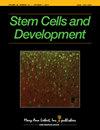Application of Slice Culture System for Successional Dental Lamina in Diphyodont Mammals.
IF 2.5
3区 医学
Q3 CELL & TISSUE ENGINEERING
引用次数: 0
Abstract
Replacement teeth develop from the successional dental lamina (SDL). Understanding how SDL transitions from quiescence to initiation is crucial for preserving dental lamina stem cells in the jawbone microenvironment and for complete tooth regeneration. Miniature pigs are good models for studying human tooth replacement because of their similarities to humans. However, the molecular mechanisms and cellular composition that initiate SDL development remain unclear. One possible reason for this is the limitations of the current methods for culturing SDL in vitro, such as the inability to directly observe tooth morphological changes during culture and low tissue viability. This study aimed to improve the in vitro culture method for SDL. Using a McIlwain Tissue Chopper, we obtained mandibular slices containing deciduous canine and SDL of permanent canine. The slices were approximately 500 μm thick and were cultured on a Transwell membrane supported with metal grids over medium. The SDL developed into the bud stage on the 2nd day and entered the cap stage on the 5th day in vitro. The expression of proliferation markers, cell death markers, and key odontogenetic genes in vitro was similar to that observed in vivo. In conclusion, we successfully applied a slice culture system to the SDL of miniature pigs. This slice culture method allowed us to directly visualize SDL initiation and further elucidate the molecular mechanisms underlying the initiation of permanent tooth development.应用切片培养系统研究双齿哺乳动物的继代齿膜
替牙由继发性牙层(SDL)发育而成。了解SDL如何从静止期过渡到起始期,对于在颌骨微环境中保存牙层干细胞和实现完整的牙齿再生至关重要。微型猪与人类相似,是研究人类牙齿替换的良好模型。然而,启动 SDL 发育的分子机制和细胞组成仍不清楚。其中一个可能的原因是目前体外培养 SDL 的方法存在局限性,如无法直接观察培养过程中牙齿形态的变化以及组织存活率低。本研究旨在改进 SDL 的体外培养方法。我们使用 McIlwain 组织切片机获得了含有落叶犬齿和恒牙 SDL 的下颌骨切片。切片厚度约为 500 μm,并在培养基上用金属网格支撑的 Transwell 膜上进行培养。SDL 在体外培养第 2 天进入芽期,第 5 天进入帽期。体外增殖标志物、细胞死亡标志物和关键牙胚基因的表达与体内观察到的相似。总之,我们成功地将切片培养系统应用于微型猪的 SDL。这种切片培养方法使我们能够直接观察 SDL 的起始过程,并进一步阐明恒牙发育起始过程的分子机制。
本文章由计算机程序翻译,如有差异,请以英文原文为准。
求助全文
约1分钟内获得全文
求助全文
来源期刊

Stem cells and development
医学-细胞与组织工程
CiteScore
7.80
自引率
2.50%
发文量
69
审稿时长
3 months
期刊介绍:
Stem Cells and Development is globally recognized as the trusted source for critical, even controversial coverage of emerging hypotheses and novel findings. With a focus on stem cells of all tissue types and their potential therapeutic applications, the Journal provides clinical, basic, and translational scientists with cutting-edge research and findings.
Stem Cells and Development coverage includes:
Embryogenesis and adult counterparts of this process
Physical processes linking stem cells, primary cell function, and structural development
Hypotheses exploring the relationship between genotype and phenotype
Development of vasculature, CNS, and other germ layer development and defects
Pluripotentiality of embryonic and somatic stem cells
The role of genetic and epigenetic factors in development
 求助内容:
求助内容: 应助结果提醒方式:
应助结果提醒方式:


